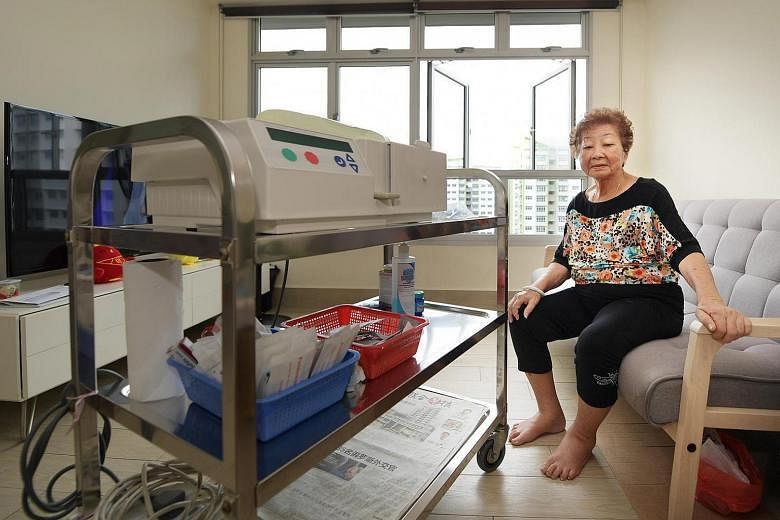If more patients opted for dialysis that can be done at home, it would lower demand for spaces at dialysis centres.
In Hong Kong, three in four patients opt for home dialysis. But only about one in eight here opt for it. When asked why, many said they have no confidence to do it themselves, and prefer to go to a centre where staff will hook them up.
Madam Chang Bee Ling, 75, is one of the exceptions. She has been on automated peritoneal dialysis (APD) since her kidneys failed two years ago.
The housewife had not wanted to go on haemodialysis where blood is taken out of the body, cleaned and replaced at a dialysis centre. This has to be done for four hours, three times a week.
She did not want to burden her two children with the cost, or the hassle of regular visits to a dialysis centre. Her doctor warned her that without dialysis, she would not survive beyond six months.
She opted for APD, one of two forms of peritoneal dialysis (PD), which is done at home overnight through a machine. She said: "It's very convenient. In the day time, I can do my housework."
But because she needs to dialyse every night, she said it means she cannot go on holidays, or even stay the night with one of her children.
The Health Ministry says it is working to promote the use of PD, which costs less than haemodialysis - $1,400 to $1,900 versus $2,200 a month.
Kidneys clean the body of its poisons. When they fail, this function has to be done through dialysis - either haemodialysis or PD.
In PD, a fluid is put into the abdomen through a permanent tube that is surgically inserted, to leach the poisons out, then taken out.
The other form of PD is continuous ambulatory peritoneal dialysis CAPD, which is done four times a day. Fluid in the abdomen is removed and fresh fluid put in. It takes 30-40 minutes.
The 2 litres of fluid stay in the abdomen, extracting the toxins from the network of small blood vessels lining the peritoneum, until the next session. Many people choose to do the exchange during mealtimes, so there is less disruption.
Salma Khalik and Linette Lai

